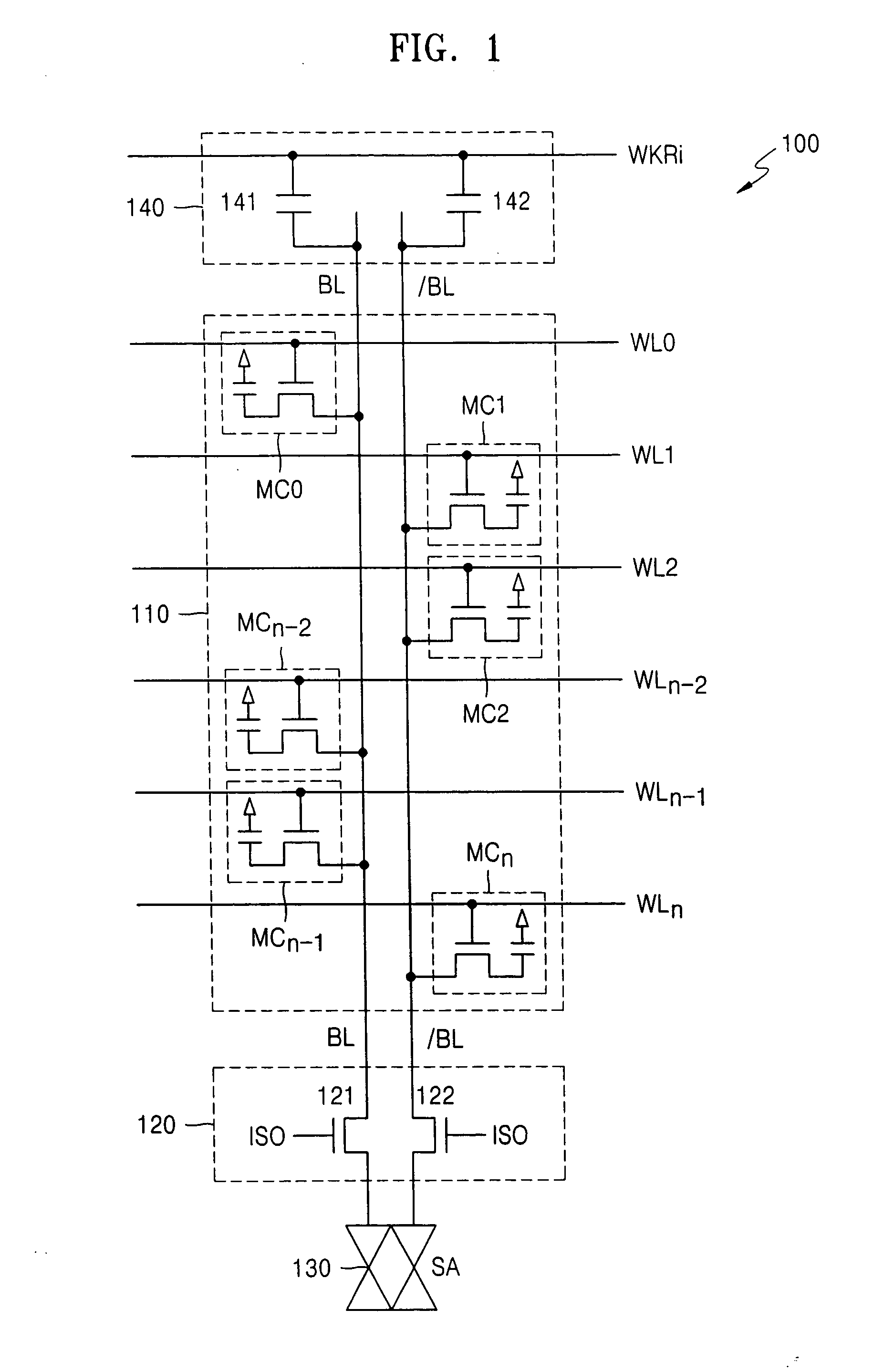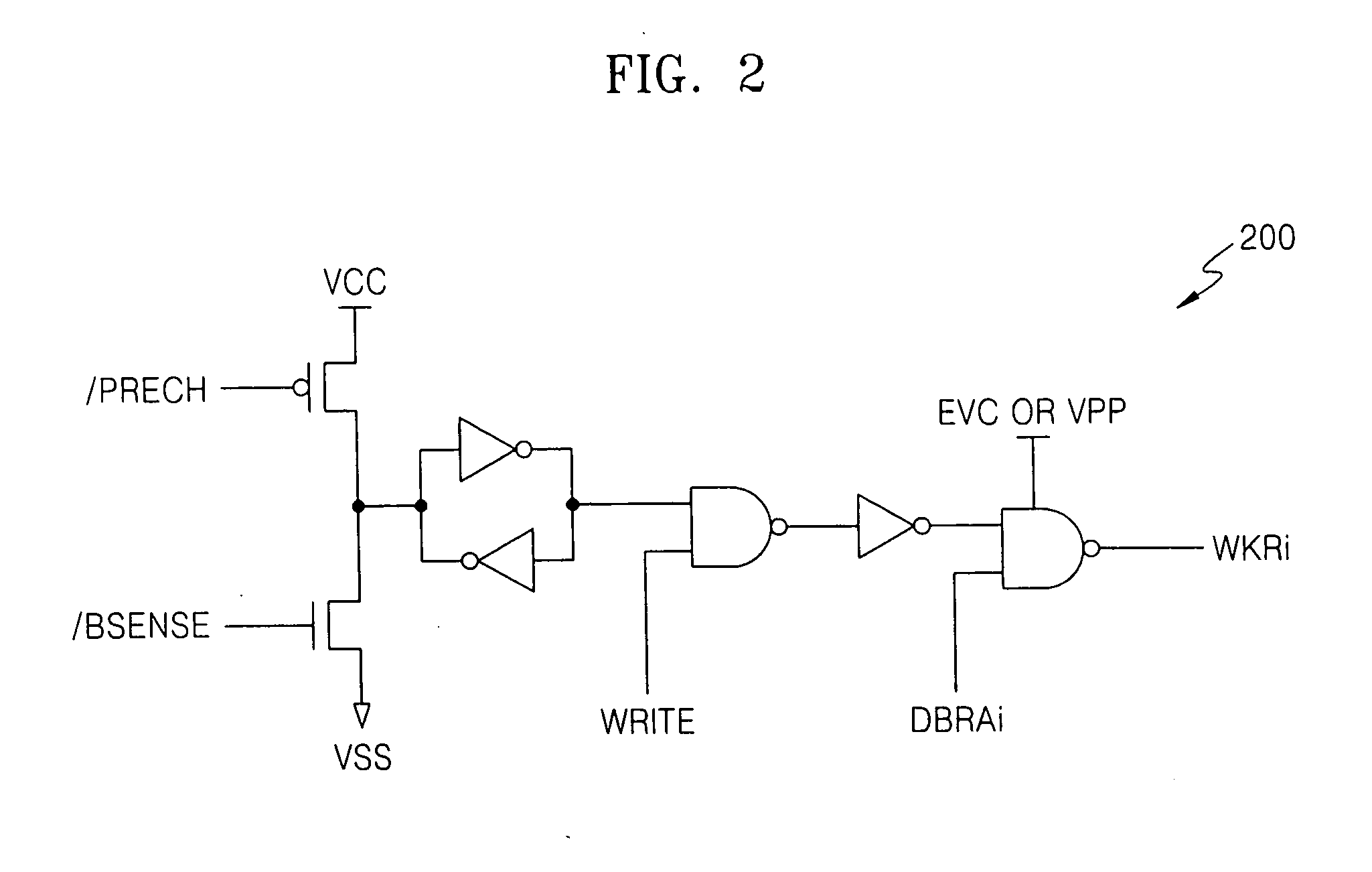Memory device and method for writing data in memory cell with boosted bitline voltage
a memory cell and bitline voltage technology, applied in the field of memory devices, can solve the problem of the capacitance limit of each cell capacitor, and achieve the effect of boosting voltage, increasing the amount of electric charge stored in the memory cell capacitor, and increasing the voltage level
- Summary
- Abstract
- Description
- Claims
- Application Information
AI Technical Summary
Benefits of technology
Problems solved by technology
Method used
Image
Examples
Embodiment Construction
[0021]FIG. 1 is a circuit diagram illustrating the structure of a bitline pair of a memory device 100 according to an embodiment of the present invention. Referring to FIG. 1, the memory device 100 includes a memory cell array 110, a bitline isolation unit 120, a sense amplification unit 130, and a bitline capacitor unit 140. In the memory cell array unit 110, memory cells MC0, MC1, MC2, MCn-2, MCn-1, and MCn are arranged at intersection points between a wordline WL0 and a bitline BL, between a wordline WL1 and a complementary bitline / BL, between a wordline WL2 and the complimentary bitline / BL, between a wordline WLn-2 and the bitline BL, between a wordline WLn-1 and the bitline BL, and between a wordline WLn and the complementary bitline / BL, respectively. The bitline isolation unit 120 selectively connects the bitline BL or the complementary bitline / BL to the sense amplification unit 130 via a transistor 121 or 122. The transistors 121 and 122 respond to a bitline isolation sig...
PUM
 Login to View More
Login to View More Abstract
Description
Claims
Application Information
 Login to View More
Login to View More - R&D
- Intellectual Property
- Life Sciences
- Materials
- Tech Scout
- Unparalleled Data Quality
- Higher Quality Content
- 60% Fewer Hallucinations
Browse by: Latest US Patents, China's latest patents, Technical Efficacy Thesaurus, Application Domain, Technology Topic, Popular Technical Reports.
© 2025 PatSnap. All rights reserved.Legal|Privacy policy|Modern Slavery Act Transparency Statement|Sitemap|About US| Contact US: help@patsnap.com



